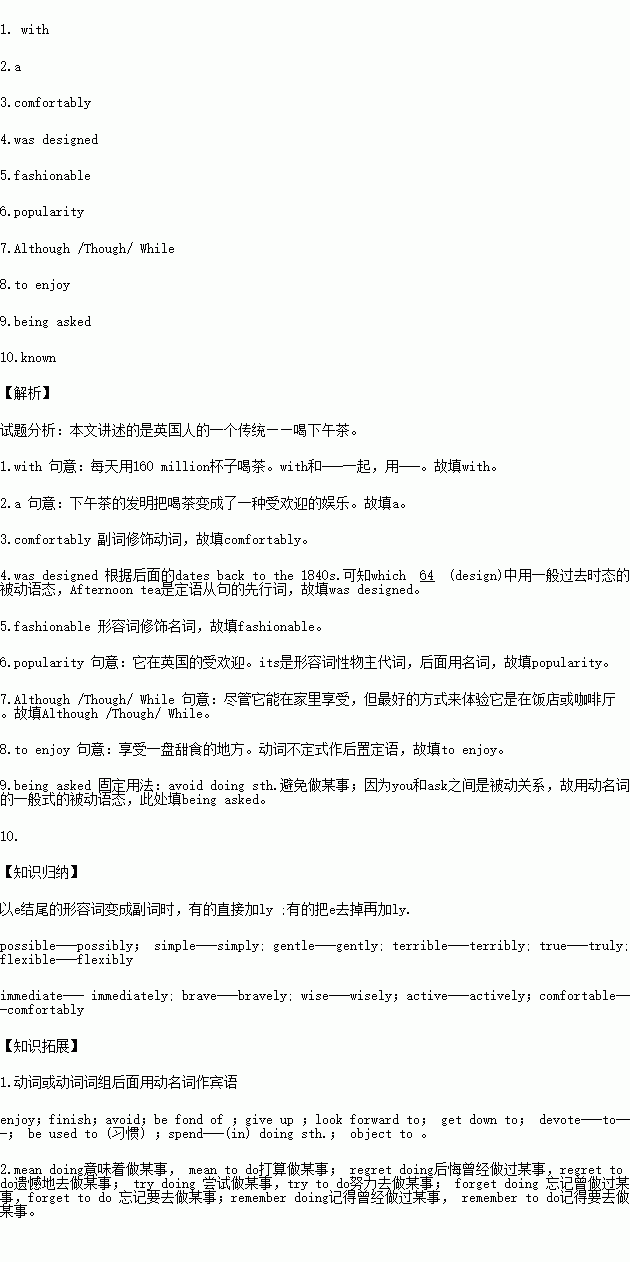题目内容
阅读下面材料,在空白处填入适当的内容(1个单词)或括号内单词的正确形式。
The British have many traditions but there is nothing more typical than taking afternoon tea. We know the Brits have a love affair with drinking tea, 1. more than 160 million cups drunk every day, but it was the invention of afternoon tea that turned tea-drink into 2. popular pastime.
This sociable feast involves drinking good quality tea 3. (comfort) while nibbling (小口吃) on nice sandwiches, scones with jam and cream and a selection of small cakes. And, of course, it can only happen in the afternoon! Afternoon tea, which 4. (design) as a light snack to bridge the gap between lunch and dinner, dates back to the 1840s. It went on to become a 5. (fashion) social occasion for the upper classes.
Now there is a resurgence (复苏) in its 6. (popular) in the UK and it is available to anyone who can afford it. 7. it can be enjoyed at home, the best way to experience it is at a smart hotel or café. But if you’re thinking of visiting such a place 8. (enjoy) a plate of sweet and savory treats with a steaming hot brew, remember the rules you must follow to avoid 9. (ask) to leave.
Writer Henry James once noted that “there are few hours in life more agreeable than the hour dedicated to the ceremony 10.______(know) as afternoon tea.” I’m sure once you have tried it, you will agree.
在学习、生活和工作中,学会与人合作是非常重要的。请根据下表中提供的信息,写一篇主题为 “Being a good partner”的英文发言稿。
为何合作 | 有利于互相学习,增进友谊,节省时间与精力。 | |
与谁合作 | 与喜欢的人合作 | 心情愉快,同甘共苦。 |
与不喜欢的人合作 | 学会容忍,发现优点。 | |
怎样合作 | 你的观点……(至少2条) | |
注意:1. 对所给要点进行陈述,适当发挥,不要逐字翻译。
2. 词数110左右。开头和结尾已经给出,不计入总词数。
参考词汇:合作cooperation n. cooperate v.
Good afternoon, everyone!
The topic of my speech today is “Being a good partner.”
Wish my views would be helpful. Thank you for your listening!

